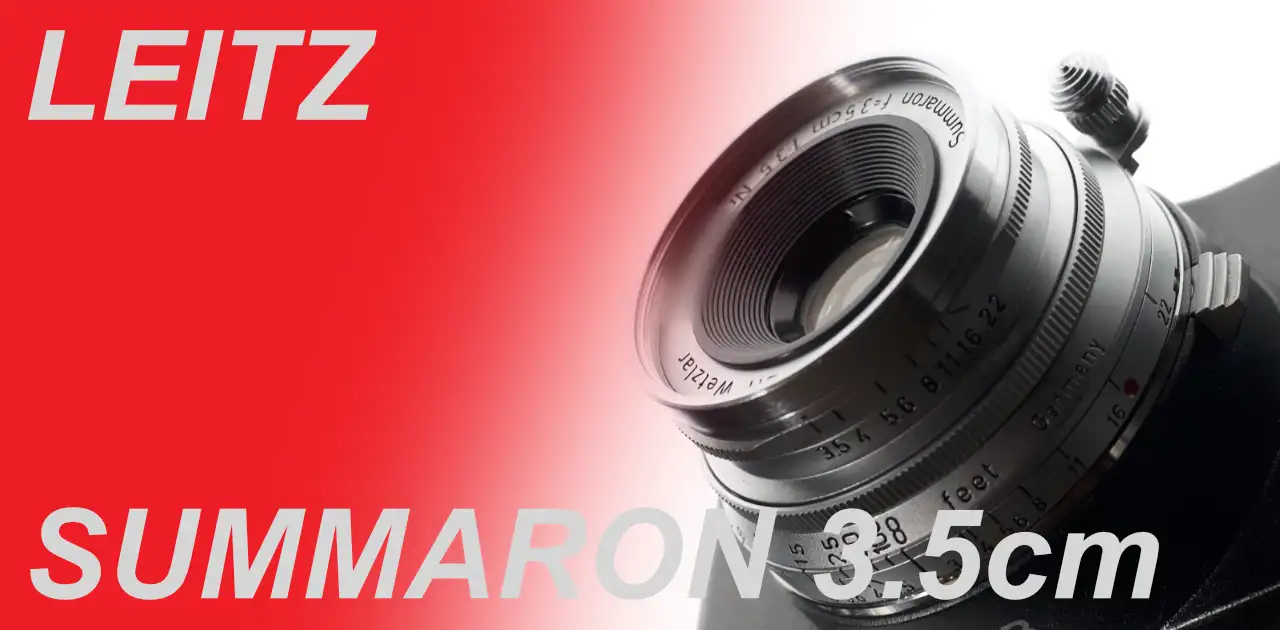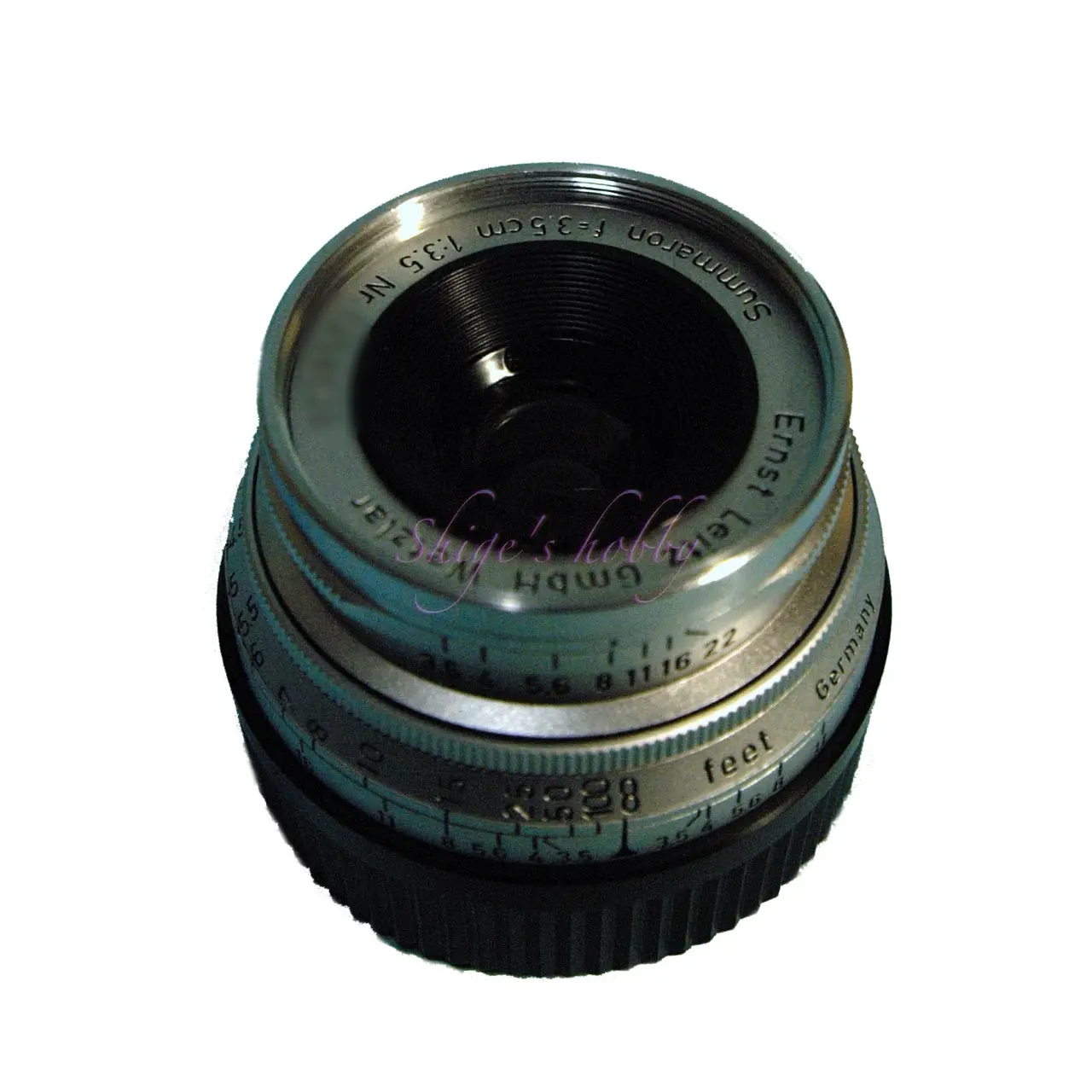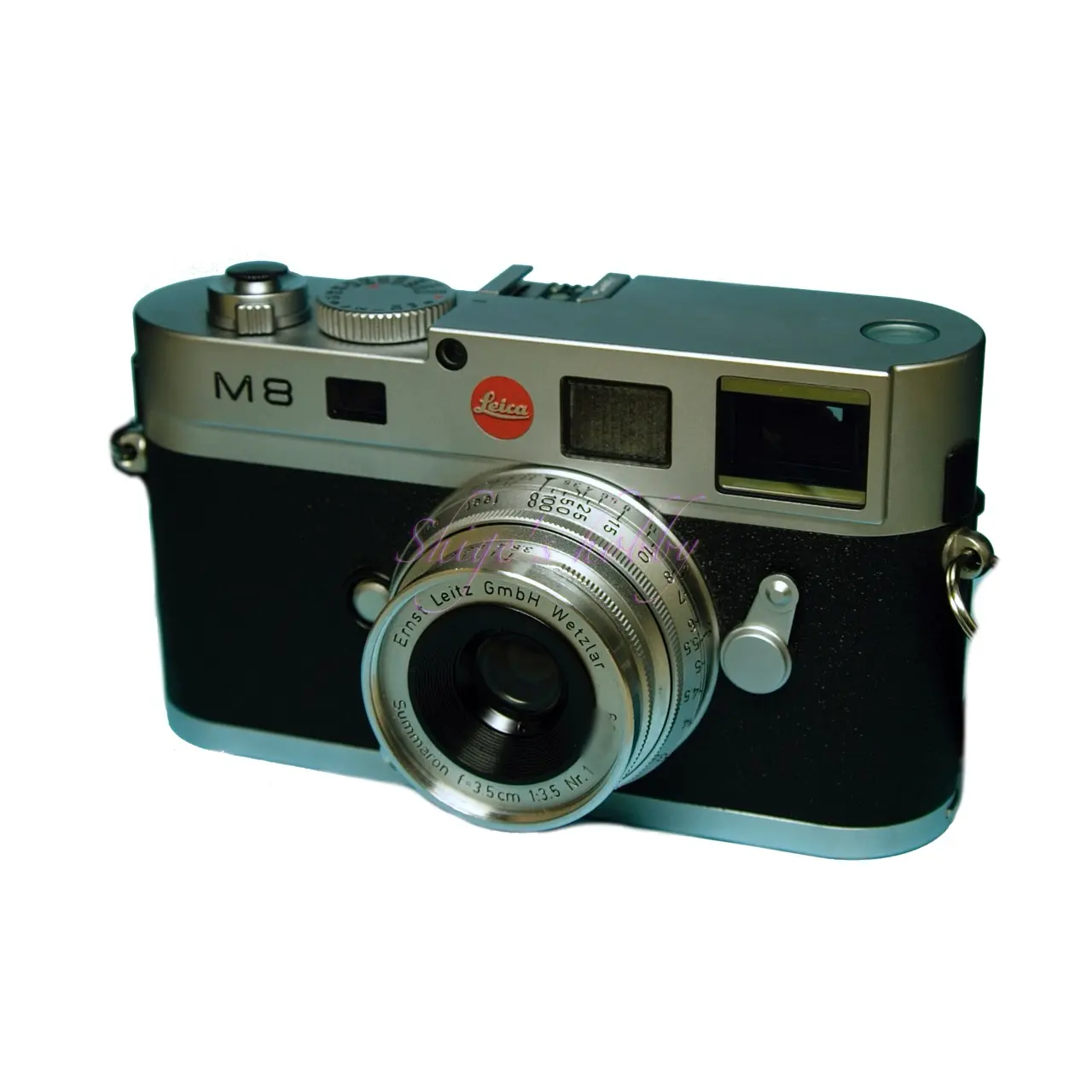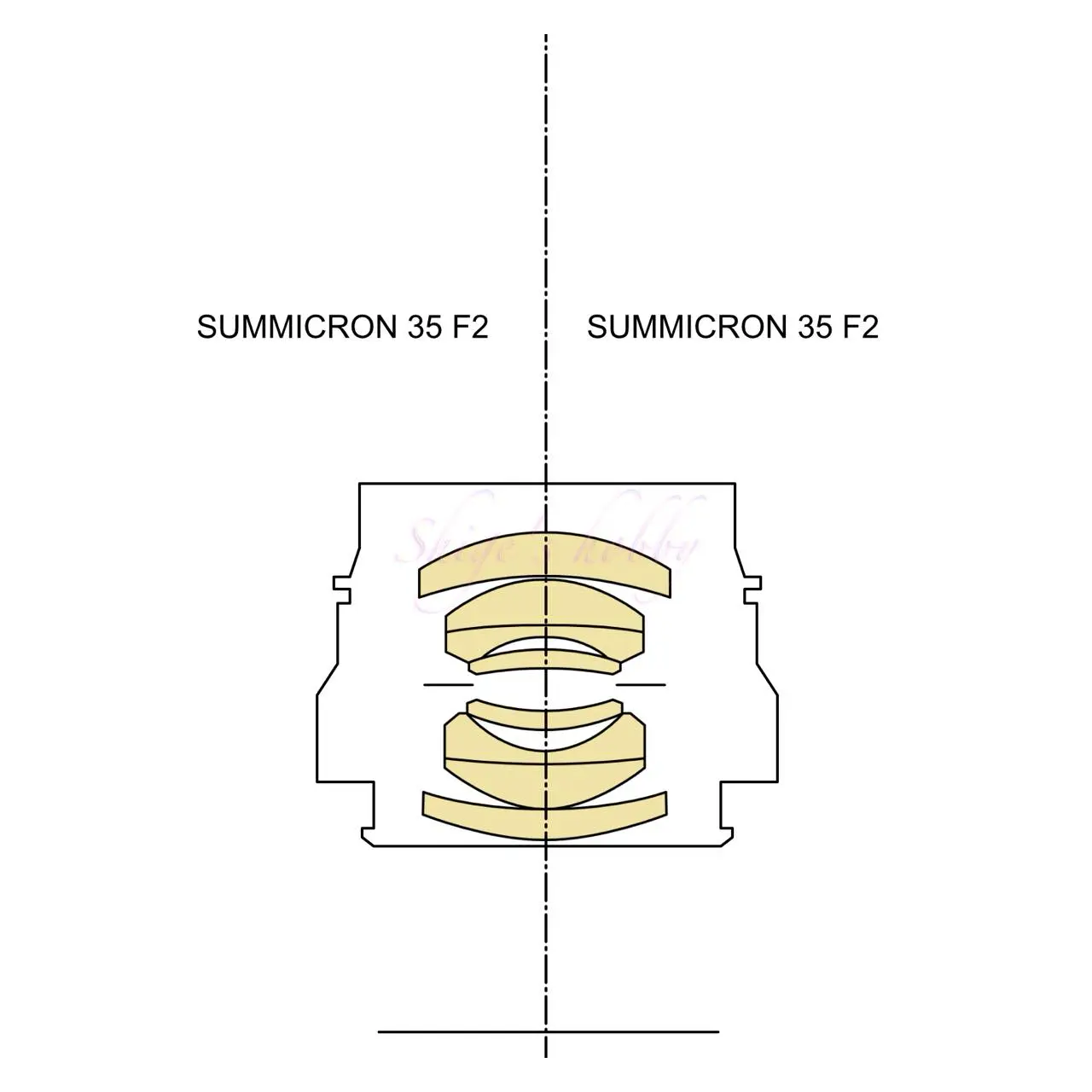Inexpensive 35mm・LEITZ SUMMARON 3.5cm F3.5

A review and sample photos taken using the LEITZ SUMMARON 3.5cm F3.5 with the LEICA M9 and LECA M8.
- Please see the disclaimer regarding advertising here.
- Italicized links in the text are advertisement links that take you to other sites.
Table of contents

Gallery
The following cameras were used to take the sample photos:
- LEICA M9
- LEICA M8
Review


1.Overview
The LEITZ SUMMARON 3.5cm F3.5 was Leica’s first 35mm wide-angle lens for the M-mount, released in 1946.
Key specifications are listed below, with detailed lens specifications listed in the table below.
- Lens Construction: 6 elements in 4 groups
- Aperture: f/3.5-22
- Aperture Blades: 10
- Minimum Focusing Distance (M-mount): 0.7m
- Minimum Focusing Distance (M-mount): 0.65m
- Hood: IROOA
- Filter Size: E39 (39mm)
2.Usability
The LEITZ SUMMARON 3.5cm F3.5‘s image quality is sometimes described as thick, but when used with the M9, it seems capable of producing sufficiently delicate images. However, the foreground and background bokeh lacks smoothness, resulting in a somewhat noisy image.
This is common to the LEICA M8 and LEICA M9, so it’s not just a peripheral issue.
The Summaron 3.5cm I owned was an M-mount lens with no lenses required, measured in feet. Its maximum aperture was f/3.5, the same as the Elmar 3.5cm, making it a slower lens compared to modern prime lenses.
Like the contemporaneous Elmar 3.5cm, Elmar 5cm, Hector 2.8cm, and Summaron 2.8cm, the Summaron 3.5cm has a finger rest with a pin-shaped stopper on the focus ring, making focusing easy. This finger rest is a design accent. However, because of this finger rest, it is impossible to attach the IROOA hood backwards.
I really liked this lens and kept it for about 10 years, but then I sold it for about the same price as when I bought the Leica M 35mm lens from my humidity-controlled cabinet.
3.Summary
In conclusion, to sum up the LEITZ SUMMARON 3.5cm F3.5, it has fewer quirks than the Elmar 35mm, but it’s not a lens that produces particularly good images.
Nearly 80 years have passed since the initial release of these lenses, and the number of lenses in good condition is decreasing. Even lenses in poor condition can still carry a high price tag, so I recommend seeing the actual lens and testing it before purchasing.
Specifications, considerations, etc.
When I bought and used the Summaron 3.5cm around 2010, it was an inexpensive lens, costing around ¥30,000 with glasses and ¥50,000 without. As of 2024, it’s priced at over ¥100,000. Unless you’re just enjoying vintage lenses, a Summarit 35mm or Summicron 35mm ASPH. would offer greater versatility for photography than the price tag.
Because it’s an old lens, there are inconsistencies in the manufacturing year listed in books and online. According to a review by Kazuki Sugino in Leica Lenses of the World Part 1 (Shashin Kogyosha), the L39 screw-mount version was released in 1946, and the Summaron with M-mount glasses was released in 1954 along with the M3. The Leica Wiki lists the release year as 1949, based on the serial number. The book “How to Identify Leica Lenses” also lists 1946, so this page states that the Summaron began production in 1946.
Following on from the description of the production year, we will now describe the lens variations.
The early and later models of the L39 screw mount version have different barrel construction. The early model has a slender and compact barrel, while the later model has a thick, muscular barrel with the same diameter as the M mount.
The M mount version has almost the same barrel as the later L39 mount model, and is available in both an M3 lens with glasses and a general-purpose lens without glasses, with the minimum focusing distance being 0.65m for the M3 lens with glasses and 1m (3.5 feet) for the general-purpose lens without glasses. It seems that the barrel design of the general-purpose lens without glasses has changed depending on the production year, and there are lenses with the same specifications but different designs.


| Items | summaron | summaron | SUMMICRON-8elements |
| Focal length(mm) | 3.5(cm) | 35(mm) | 35(mm) |
| Max aperture | 3.5 | 2.8 | 2 |
| Min aperture | 22 | 22 | 16 |
| Aperture blade | 10 | 10 | 10 |
| Lens Construction | 6 elements in 4 groups | 6 elements in 4 groups | 8 elements in 6 groups |
| Min distance(m) | 1.0 goggle=0.65 | 0.7 goggle=0.65 | 0.7 goggle=0.65 |
| Lens length(mm) | – | 29.4 | 28.4 |
| Max diameter(mm) | 51 | 51 | 51 |
| Filter Size(mm) | E39 | E39 | E39 |
| Lens hood | IROOA | IROOA | IROOA |
| Lens mount | M | M | M |
| Weight(g) | 195 | 135 | 150 |
| Release date | 1946 | 1958 | 1958〜1969 |
| Production numbers | 122,021 | 52,400 | 38,450 |
Reference links
- Leica Wiki SUMMARON 35mm F3.5
- Classic Camera Selection 19: How to Identify Leica Lenses (Asahi Sonorama)
- The book describes the specifications and the differences between them, but makes no mention of lens depiction.
- The appendix includes a diagram of the lens construction.
- Leica Lenses of the World Part 1 (Shashin Kogyosha)
- There is a review of the Summaron 3.5cm F3.5 by Kazuki Sugino on page 55.
Affiliate links

Update history
- 2025.8.16
![[商品価格に関しましては、リンクが作成された時点と現時点で情報が変更されている場合がございます。] [商品価格に関しましては、リンクが作成された時点と現時点で情報が変更されている場合がございます。]](https://hbb.afl.rakuten.co.jp/hgb/0f8addca.6e306624.0f8addcb.b7dc3dde/?me_id=1191940&item_id=11733232&pc=https%3A%2F%2Fthumbnail.image.rakuten.co.jp%2F%400_mall%2Fnaniwa%2Fcabinet%2Fseco_sku37%2F2221070416395-01.jpg%3F_ex%3D128x128&s=128x128&t=picttext)
![[商品価格に関しましては、リンクが作成された時点と現時点で情報が変更されている場合がございます。] [商品価格に関しましては、リンクが作成された時点と現時点で情報が変更されている場合がございます。]](https://hbb.afl.rakuten.co.jp/hgb/0f8addca.6e306624.0f8addcb.b7dc3dde/?me_id=1191940&item_id=11739263&pc=https%3A%2F%2Fthumbnail.image.rakuten.co.jp%2F%400_mall%2Fnaniwa%2Fcabinet%2Fseco_sku45%2F2111012447320-01.jpg%3F_ex%3D128x128&s=128x128&t=picttext)
![[商品価格に関しましては、リンクが作成された時点と現時点で情報が変更されている場合がございます。] [商品価格に関しましては、リンクが作成された時点と現時点で情報が変更されている場合がございます。]](https://hbb.afl.rakuten.co.jp/hgb/129f17dc.27f0c9d8.129f17dd.01c38374/?me_id=1296072&item_id=14599384&pc=https%3A%2F%2Fthumbnail.image.rakuten.co.jp%2F%400_mall%2Fkomehyo-online%2Fcabinet%2F10066%2F2600065893708_b.jpg%3F_ex%3D128x128&s=128x128&t=picttext)
Leave a Reply